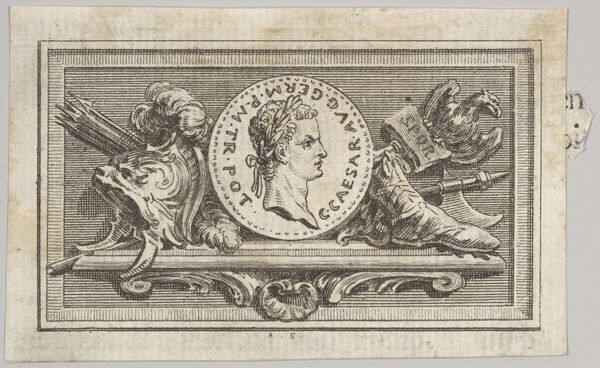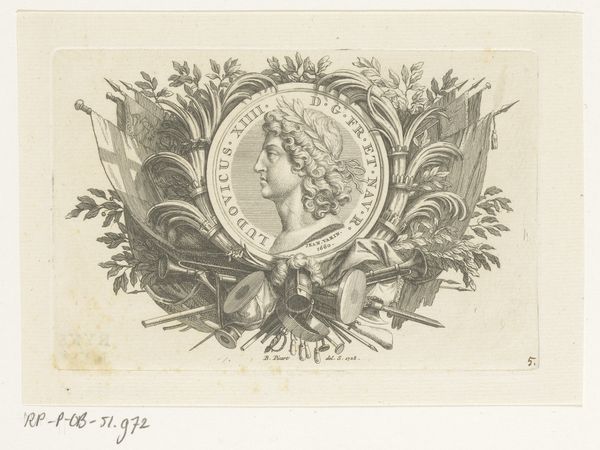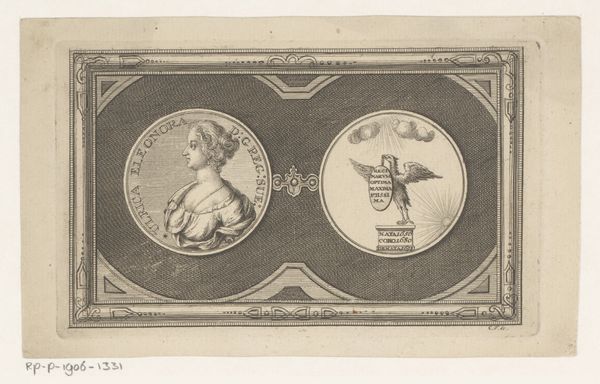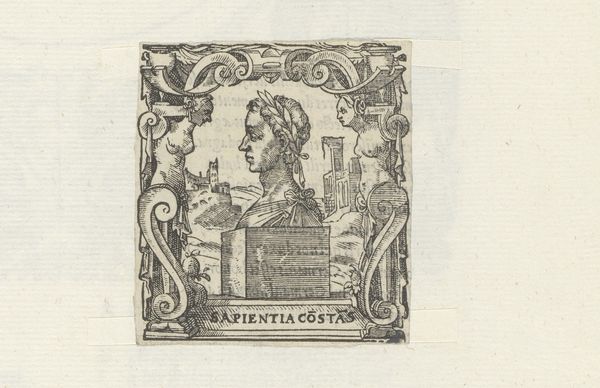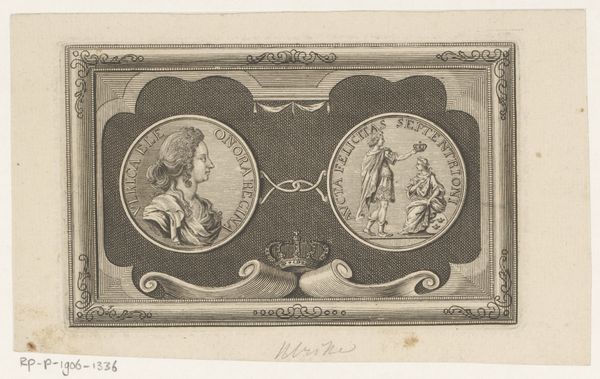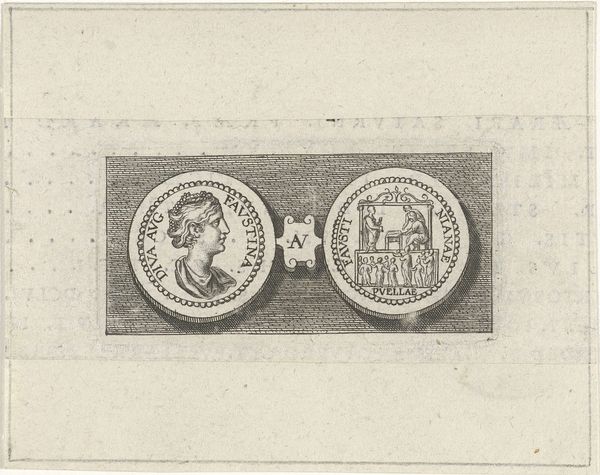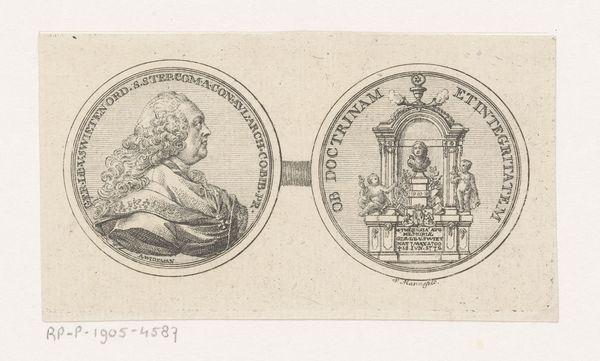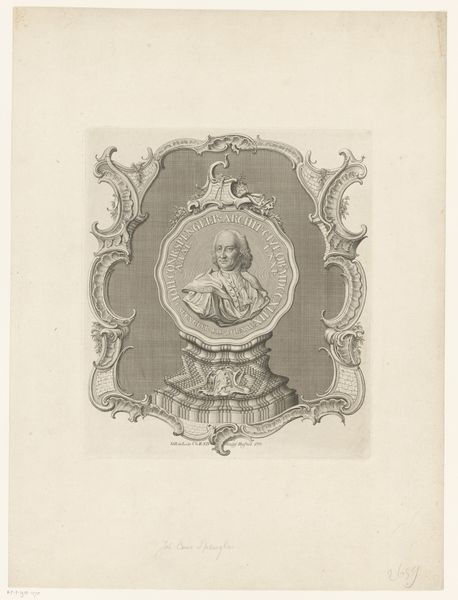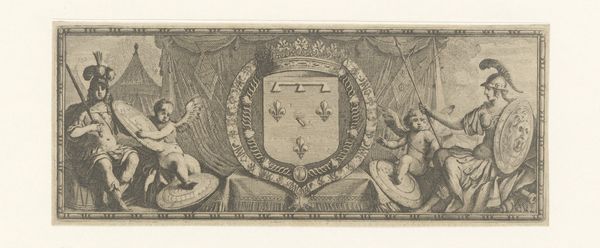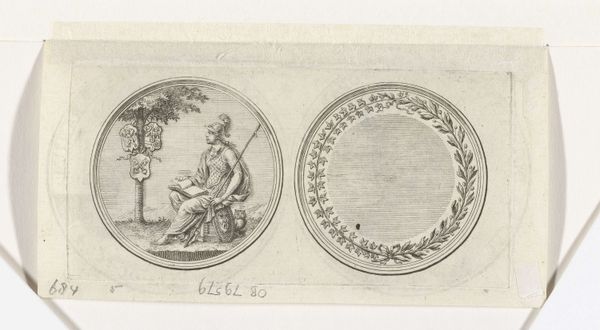
Medal with Portrait of Livy in the 5th Book, from Tibère ou les six premiers livres es Annales de Tacite Traduits par M. l'abbé de la Bléterie Professeur d'Eloquence au Collège Royal et de l'Académie Royale des Inscriptions et Belles-lettres. A Paris de l'Imprimerie Royale 1768
0:00
0:00
drawing, print, engraving
#
portrait
#
medal
#
drawing
# print
#
engraving
#
profile
Dimensions: Sheet: 1 11/16 × 2 11/16 in. (4.3 × 6.8 cm)
Copyright: Public Domain
Editor: Here we have Augustin de Saint-Aubin’s "Medal with Portrait of Livy in the 5th Book", made in 1768. It's an engraving. It looks very crisp, but I am wondering what was its purpose. What do you see in this piece? Curator: I'm drawn to the material production of this object, its existence as a print, reproduced for a potentially wide audience. It isn't simply a celebration of Livy. Consider the economics: it's from a book commissioned by the Royal Printing house, intended to glorify the King by showcasing classical learning. Editor: So the object itself and its reproduction mattered as much as the subject, Livy? Curator: Precisely! Saint-Aubin isn’t just rendering Livy; he’s participating in a larger system of patronage and consumption. How was the engraving process perceived? Was it ‘art’ or a form of skilled labor, a trade? Where did Saint-Aubin learn to engrave? Who did he work for? Editor: That makes me think about the engraver's skill being used to broadcast a certain image, a constructed legacy for the king through these printed books. Did people buy these prints separately, almost like propaganda? Curator: It prompts us to question the hierarchies between craft and fine art at the time. It’s mass production in a pre-industrial sense, an interesting moment. Editor: I see now that this isn’t just a portrait; it's an artifact of 18th-century book production, deeply embedded in the economy of knowledge and power. Thank you! Curator: Indeed, and by examining its means of production, we unearth hidden aspects of its meaning.
Comments
No comments
Be the first to comment and join the conversation on the ultimate creative platform.
